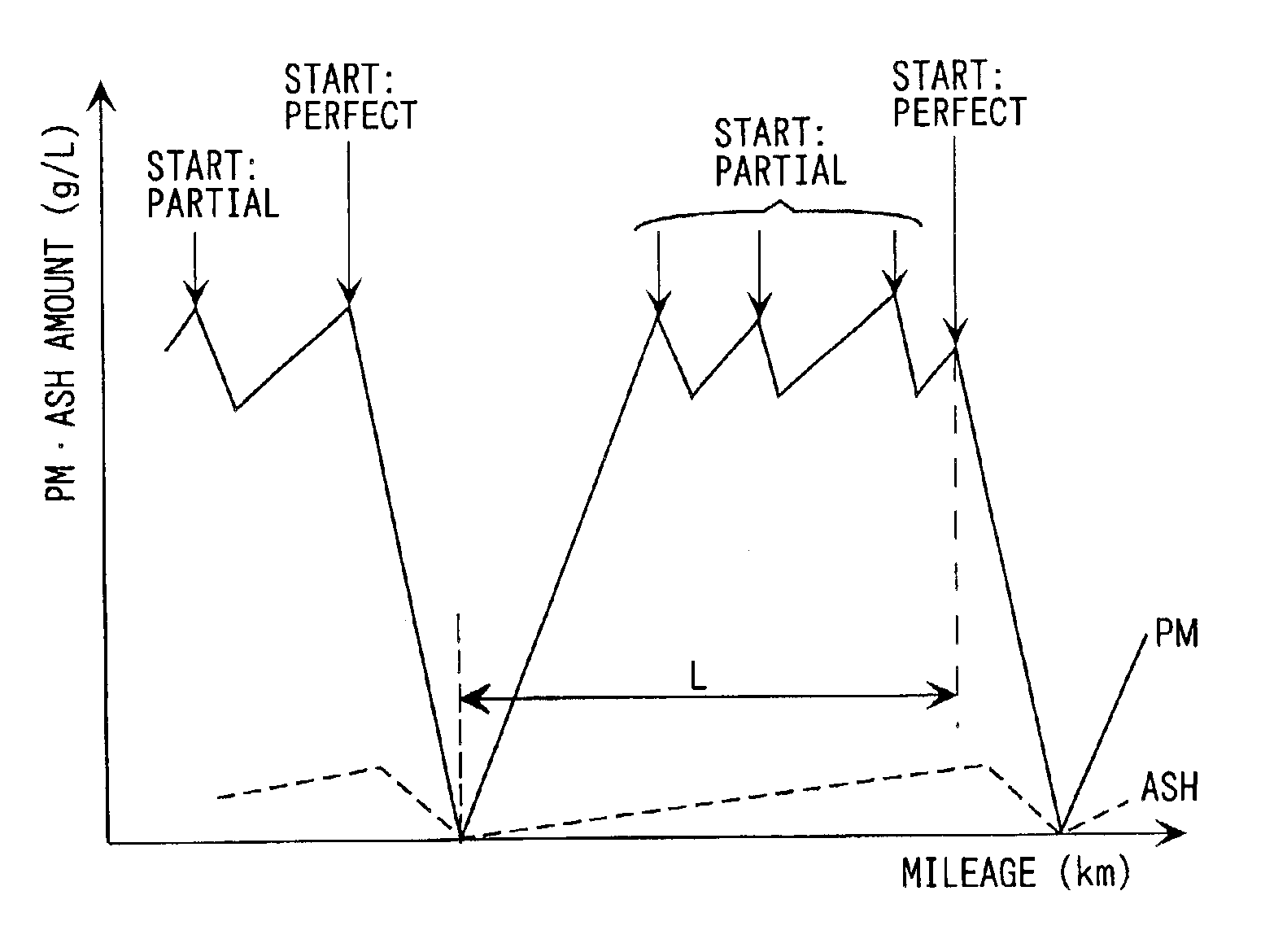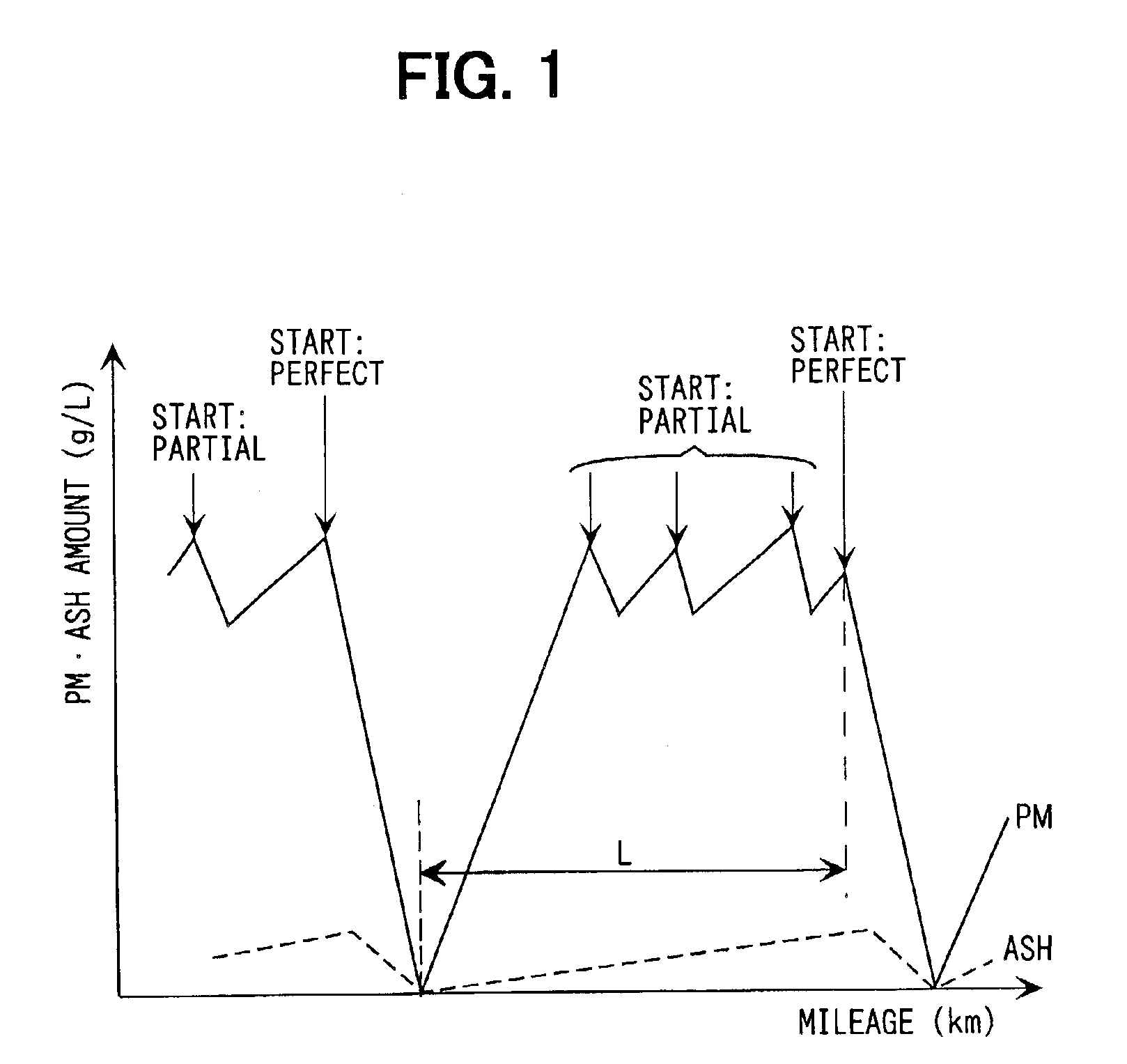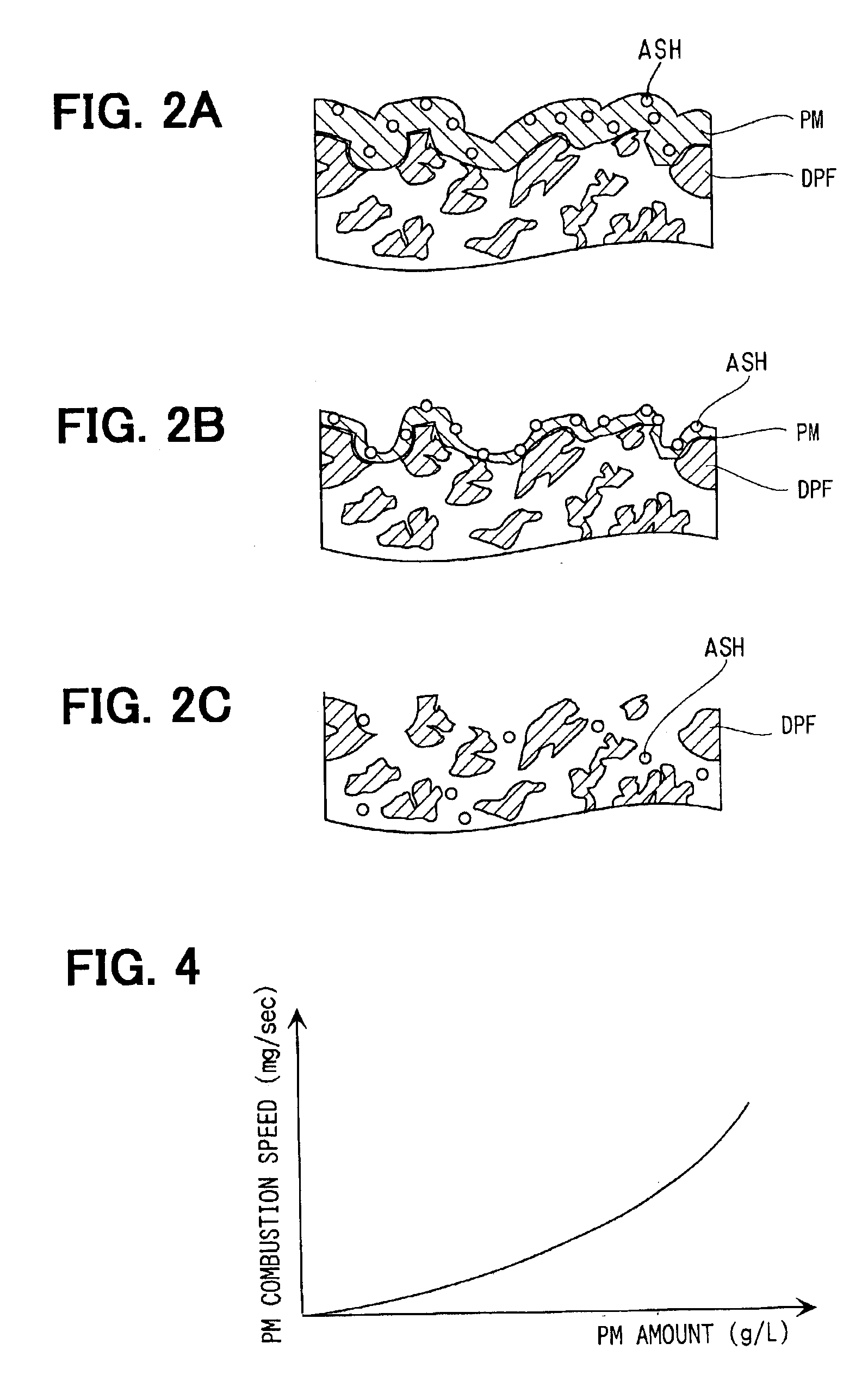Exhaust gas filter regenerating apparatus effectively burning particulate material
a technology of exhaust gas filter and regenerating apparatus, which is applied in the direction of colloidal chemistry, machines/engines, electric control, etc., can solve the problems of impurities that cannot easily pass through the filter, and achieve the effect of less fuel consumption of internal combustion engines
- Summary
- Abstract
- Description
- Claims
- Application Information
AI Technical Summary
Benefits of technology
Problems solved by technology
Method used
Image
Examples
first embodiment
[0020]A first embodiment is directed to a regenerating apparatus, shown in FIG. 3, for a diesel particulate filter (DPF) 26. Structure of the regenerating apparatus will be explained hereunder. The regenerating apparatus is mounted on a vehicle that is driven by a diesel engine 38. A suction pipe 44 is connected with a suction port (not shown) of the diesel engine 38. An airflow meter 10 for detecting a suction flow amount is installed within the suction pipe 44. A throttle valve 42 is installed on the downstream side of the airflow meter 10, while driven by an electric motor 12 through a rotation axis 40 for adjusting the suction flow amount.
[0021]An exhaust pipe 30 is connected with an exhaust port (not shown) of the diesel engine 38. The DPF 26, formed of porous ceramics and coated with oxidation catalytic agent, is installed within the exhaust pipe 30.
[0022]Detectors 24, 32 installed in the exhaust pipe 30 on both upstream and downstream sides of the DPF 26 are connected with a ...
second embodiment
[0041]A second embodiment utilizes a fuel injection amount as the second parameter for predicting the ash deposit amount A, while the first embodiment utilizes the driving mileage L. Referring to FIG. 6, the processing of the regenerating process is the same as that of FIG. 5 of the first embodiment except for steps 200, 215 and 240.
[0042]At step 200, a cumulative fuel injection amount Q after the previous perfect regenerating process is detected. The fuel injection amount Q is detected by reading a counter, stored in the RAM 56, which is incremented according to the fuel injection amount and reset at the termination of the perfect regenerating process. The fuel injection amount Q is used, as the second parameter, for predicting the ash deposit amount A since the ash increases with fuel injection amount Q. For instance, a threshold amount Q1 of 60 liters is assumed to correspond to the threshold A1, e.g., 0.085 g / l, of the ash deposit where the perfect regenerating process should be...
third embodiment
[0044]A third embodiment utilizes the number C of partial regenerating process times after the previous perfect regenerating process as the second parameter for predicting the ash deposit amount A, while the first embodiment utilizes the driving mileage L. The other processing of the regenerating process is the substantially same as that of the first embodiment.
[0045]Referring to FIG. 7, at step 105, a PM deposit amount M is predicted. At step 310, whether the PM deposit amount M predicted at step 105 exceeds the threshold M1 is determined. When the PM deposit amount M does not exceed the threshold M1, the processing returns to step 105. When the PM deposit amount M exceeds the threshold M1, the processing proceeds to step 315 where whether the number C is equal to a threshold number C1 is determined.
[0046]When the number C is less than the threshold number C1, the partial regeneration process is started at step 120. After the partial regenerating process at steps 120, 125, 130, and...
PUM
 Login to View More
Login to View More Abstract
Description
Claims
Application Information
 Login to View More
Login to View More - R&D
- Intellectual Property
- Life Sciences
- Materials
- Tech Scout
- Unparalleled Data Quality
- Higher Quality Content
- 60% Fewer Hallucinations
Browse by: Latest US Patents, China's latest patents, Technical Efficacy Thesaurus, Application Domain, Technology Topic, Popular Technical Reports.
© 2025 PatSnap. All rights reserved.Legal|Privacy policy|Modern Slavery Act Transparency Statement|Sitemap|About US| Contact US: help@patsnap.com



